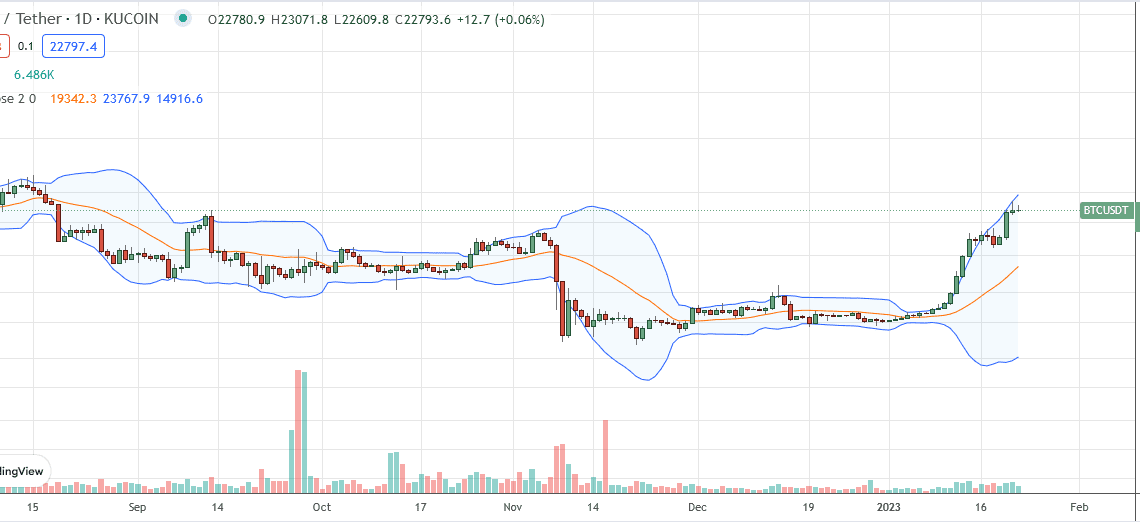After 216 days, the Bitcoin Market Value to Realized Value (MVRV) ratio finally broke above 1, making this accumulation the second longest after it took BTC prices 300 days to bottom up after the bear run of 2014-2015. It also signals the likelihood of another refreshing BTC rally after gains of last week.
Bitcoin’s MVRV Breaks Above 1
The breakout coincided with BTC prices surging to as high as $23,300 on Saturday, January 21, a positive development, especially for optimistic holders.
As of writing on January 22, prices have cooled off, and the coin is trending at around $22,700, albeit with relatively low trading volumes. Still, the retracement puts BTC within a bullish formation following impressive gains on January 20 when the coin printed higher, defying gravity and confirming demand.
The MVRV ratio changes depending on Bitcoin’s market forces. The prevailing sentiment is that BTC is bottoming up. Bulls could be preparing for another leg up, injecting the much-needed volatility and volatility into the crypto markets. However, the absence of confirming indicator presented problems.
Technical and fundamental analysts may use the MVRV ratio to time market entries and exits. Typically, whenever the MVRV ratio is below 1, then it implies that prices are at their bottom.
Any reversal from sub-1 to above 1 with increasing valuation may signal price bottoms and, possibly, more room for upsides in the coming days. This signal could be a precursor to guide swing and long-term traders to hold on to their long positions and wait for more gains before exiting once BTC becomes overvalued based on on-chain readings.
Conversely, historical values reveal that whenever the MVRV is above 3.7, there is a real probability that the Bitcoin market will be overheating. Subsequently, it could be the best time to exit and take profits.
Bitcoin Sentiment Shifting
To MVRV ratio is dynamic, changing depending on the fluctuating valuation of BTC. At any point, the MVRV ratio is calculated by dividing the market value and the realized value of bitcoin. The market value measures the prevailing sentiment amongst holders, which, as history shows, changes depending on spot rates.
Meanwhile, the realized value considers each coin’s actual spending. Calculating the realized value takes into account the acquisition cost of each coin in question. If the MVRV ratio is below 1, should coins be…
Click Here to Read the Full Original Article at NewsBTC…
























